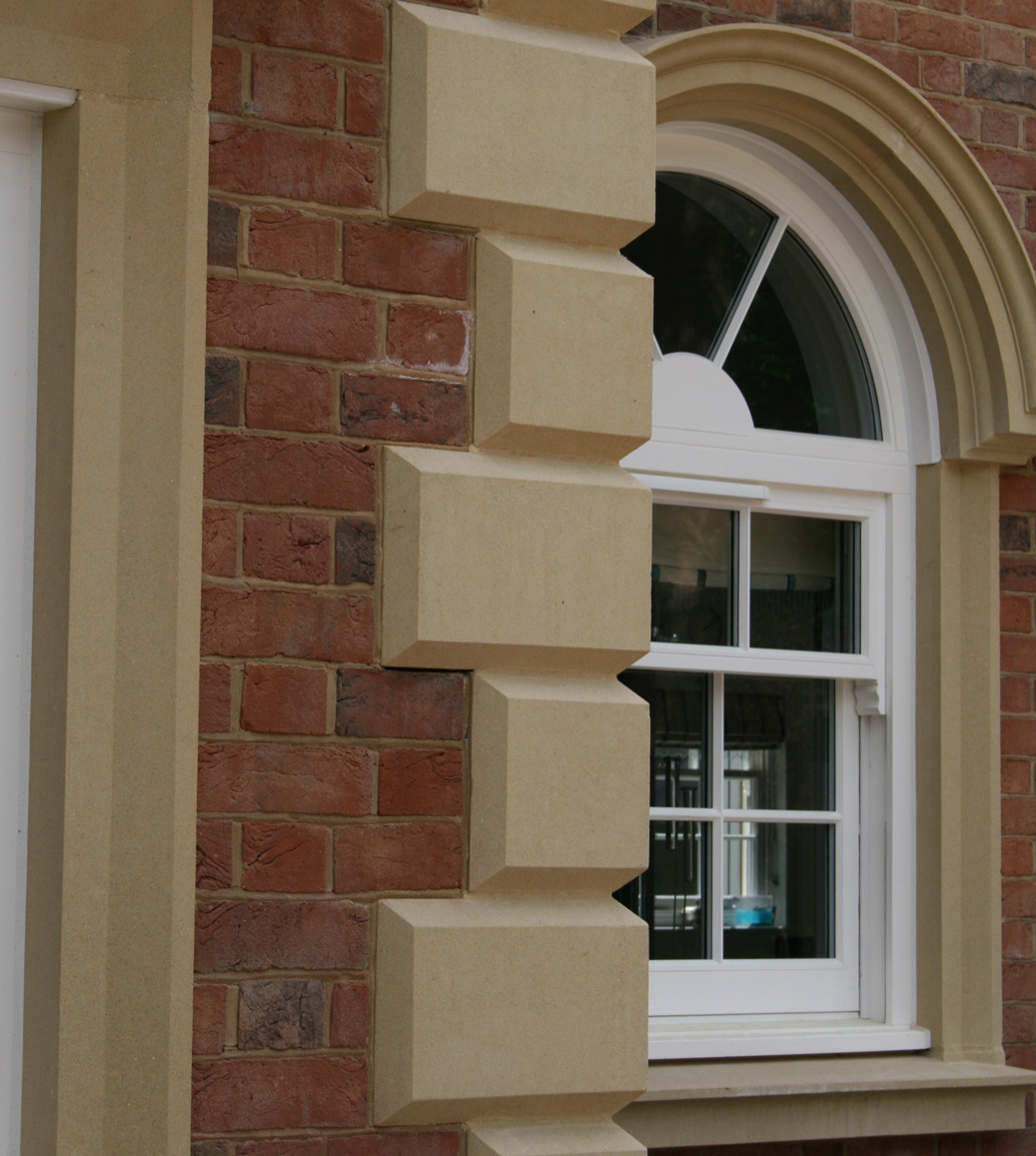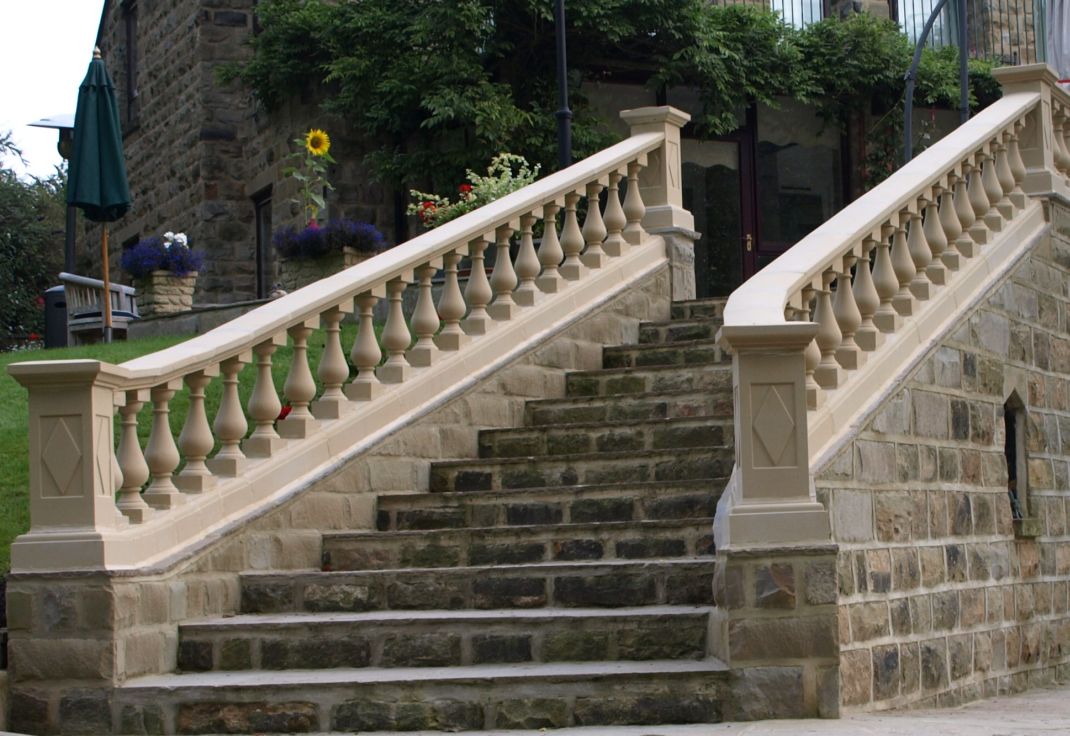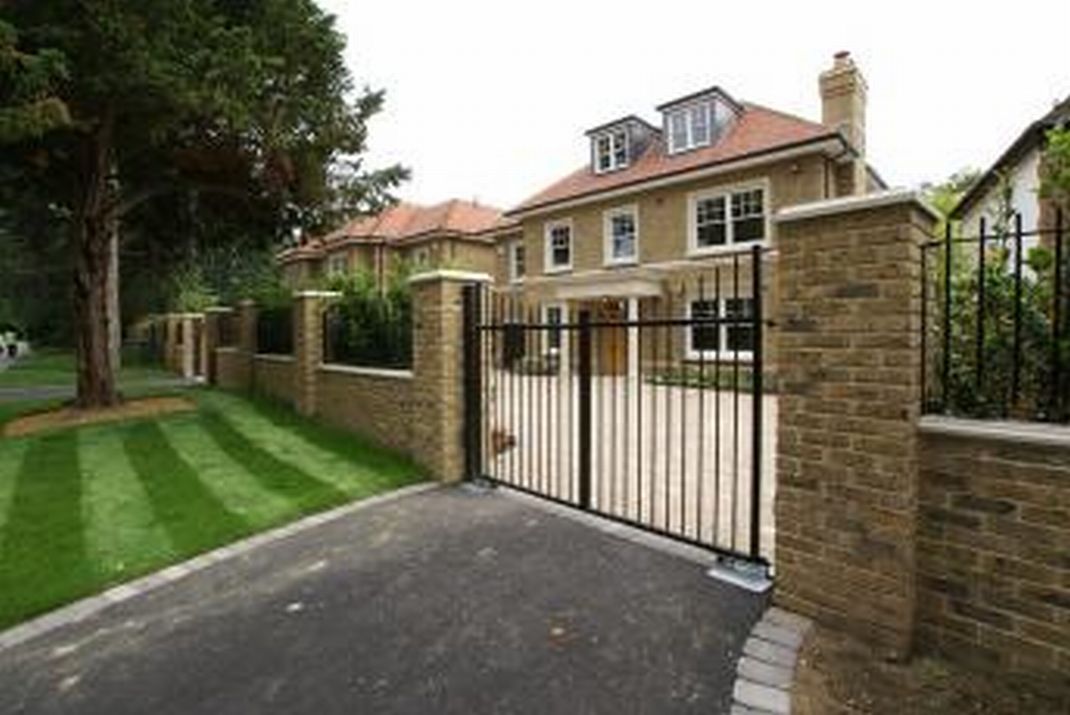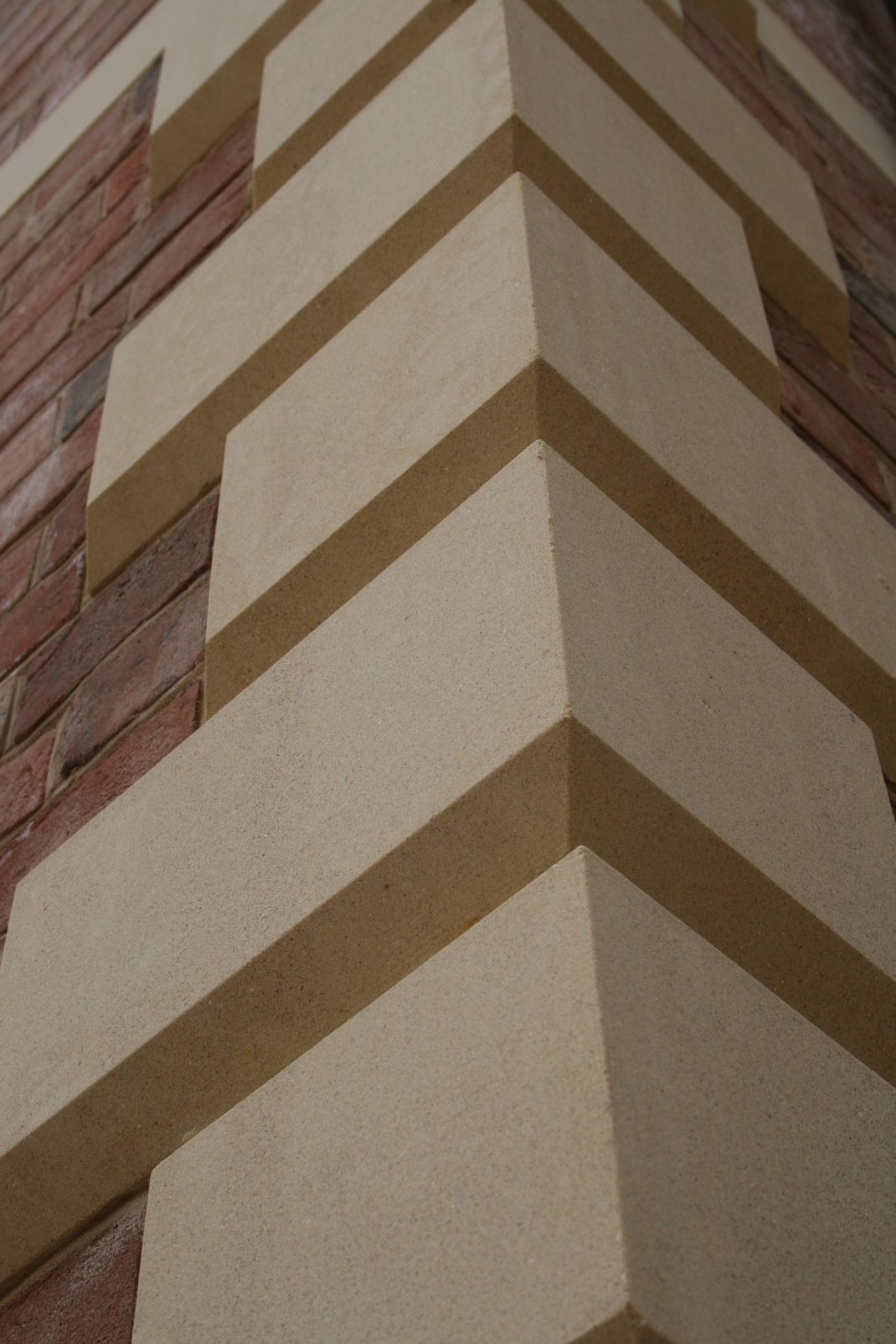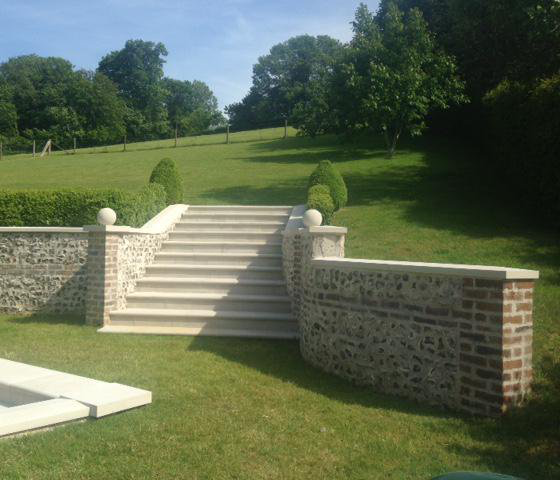As experts in cast stone manufacturing since 1968, we understand that coping stones are a crucial element in both architectural design and practical construction.
In this comprehensive guide, we’ll answer the most common questions about coping stones to help you make informed decisions for your project.
What Is a Coping Stone and What Does It Do?
Coping stones are the protective caps that sit atop walls, parapets, and other masonry structures. Think of them as the crown that not only completes the aesthetic appearance of your wall but also serves as its first line of defence against the elements.
These architectural elements serve multiple crucial functions in your construction:
- Weather Protection: They act as a shield, directing rainwater away from the wall’s surface and preventing water from seeping into the structure. This protection is essential for maintaining the integrity of your wall over time.
- Structural Support: By distributing weight evenly across the wall structure, coping stones help maintain the stability and longevity of your masonry work.
- Aesthetic Enhancement: Beyond their practical benefits, coping stones provide a finished look to your wall, adding both value and visual appeal to your property.
Choosing the Right Material: What’s the Best Stone for Coping?
When it comes to selecting the perfect material for your coping stones, several options are available. As manufacturers of premium cast stone products, we believe cast stone offers the ideal combination of benefits for most projects.
Cast Stone Coping
Cast stone has become increasingly popular for coping applications and for good reason. Here’s why we recommend it:
- Durability: Cast stone withstands harsh weather conditions and maintains its appearance over time, requiring minimal maintenance.
- Consistency: Each piece is manufactured to exact specifications, ensuring uniform colour and texture throughout your project.
- Cost-Effectiveness: Compared to natural stone, cast stone provides similar aesthetic appeal at a more affordable price point.
- Versatility: Our manufacturing process allows for custom designs and precise matching to existing stonework.
Essential Care and Installation Guidelines
Sealing Your Coping Stones
The question of whether coping stones need to be sealed is one we frequently encounter. While our cast stone products come with inherent weather resistance, sealing provides valuable additional protection. Here’s why sealing matters:
- Enhanced Protection: A quality sealer creates an additional barrier against moisture penetration and environmental damage.
- Improved Longevity: Sealed coping stones typically last longer and maintain their appearance better over time.
- Easier Maintenance: Sealed surfaces are easier to clean and maintain, saving you time and effort in the long run.
The Importance of Proper Overhang
Overhang isn’t just an aesthetic choice, it’s a crucial functional element of coping stone installation. We typically recommend an overhang of 30-40mm on each side for optimal performance. Here’s why overhang matters:
The proper overhang ensures that water drips clear of the wall face, preventing water from running down the wall and potentially causing damage. This simple design feature plays a vital role in protecting your entire wall structure from water damage and erosion.
Professional Installation Guide
The success of your coping stone installation depends heavily on proper technique and attention to detail. Here’s our recommended process:
Preparation
Before beginning installation, ensure you have:
- A clean, level wall-top surface
- Accurate measurements and angles
- All necessary tools and materials are ready
- Appropriate weather conditions for installation
DPC Installation
The Damp Proof Course (DPC) is crucial for long-term performance. Your DPC should:
- Extend beyond the overhang on both sides
- Be properly aligned and secured
- Use appropriate materials for your specific application
Common Issues and Solutions
Understanding potential problems can help you prevent them. Here are some common issues and their solutions:
Why Do Coping Stones Come Loose?
Loose coping stones typically result from one or more of these factors:
- Poor initial installation or inadequate mortar mix
- Missing or damaged DPC
- Natural weathering and freeze-thaw cycles
- Physical impact or damage to the stones
The good news is that most of these issues are preventable with proper installation and maintenance.
Maintenance and Care
Regular maintenance ensures your coping stones continue to perform effectively. We recommend:
A quarterly visual inspection of your coping stones, paying special attention to:
- Joint integrity
- Signs of water penetration
- Any movement or loosening
- Surface condition
Making the Right Choice for Your Project
Selecting and installing the right coping stones is crucial for both the protection and aesthetic appeal of your walls.
Whether you’re working on a new construction project or renovating an existing structure, proper coping stone installation can make the difference between a wall that lasts for decades and one that requires frequent repairs.
Choose Us for Quality Cast Stone Coping Solutions
With over 50 years of experience in cast stone manufacturing, Cranborne Stone provides comprehensive coping solutions for any project. Our commitment to quality ensures you receive:
- Premium, durable materials that stand the test of time
- Expert technical support throughout your project
- Custom solutions to match your specific requirements
- Professional installation guidance
- Comprehensive warranty coverage
Contact our team today for expert advice on your coping stone requirements or to request a quote for your project.
Get in touch with our experts for a consultation on your coping stone needs!
Alternatively
Take a look at our existing cast stone coping stones in stock!

